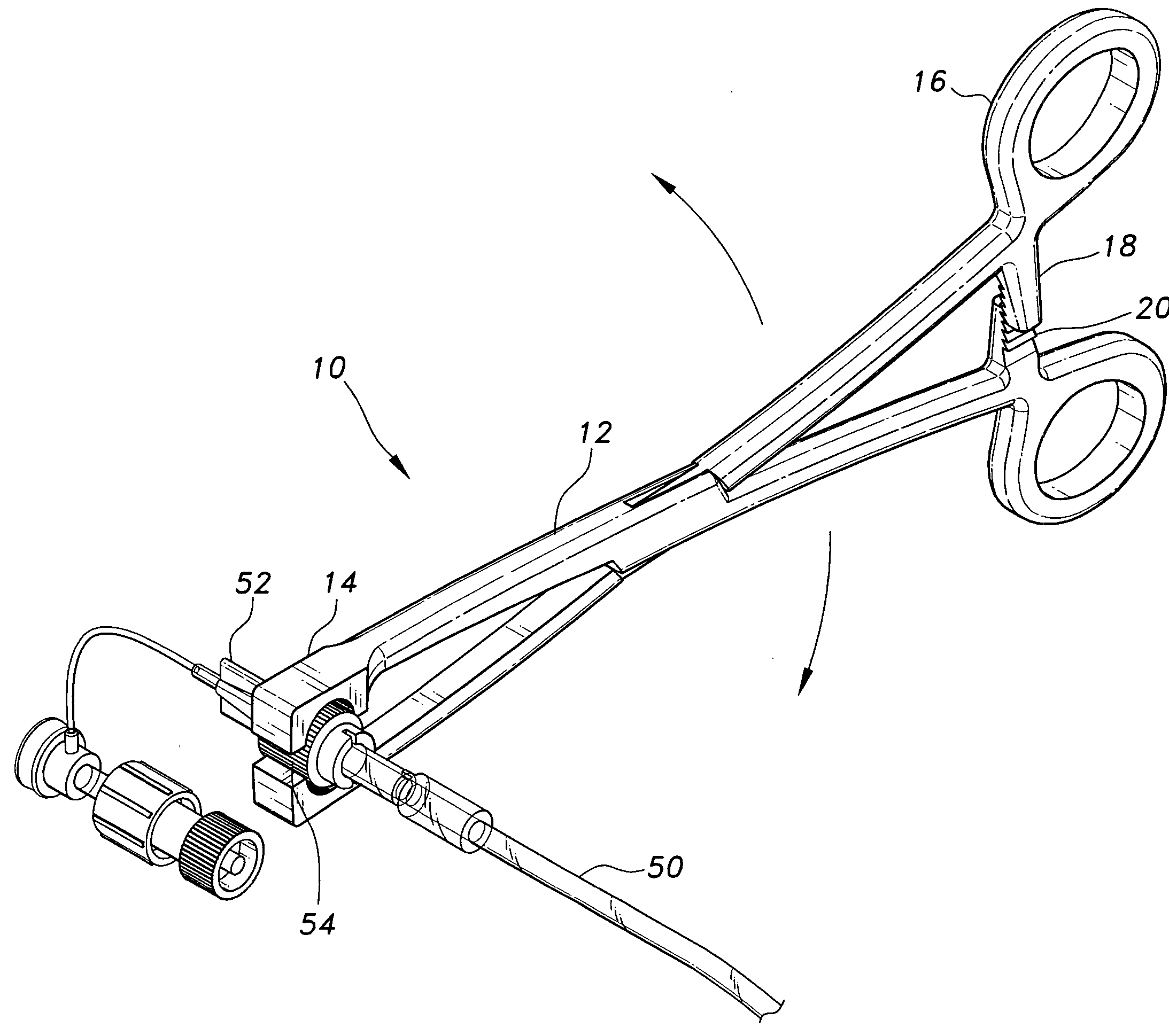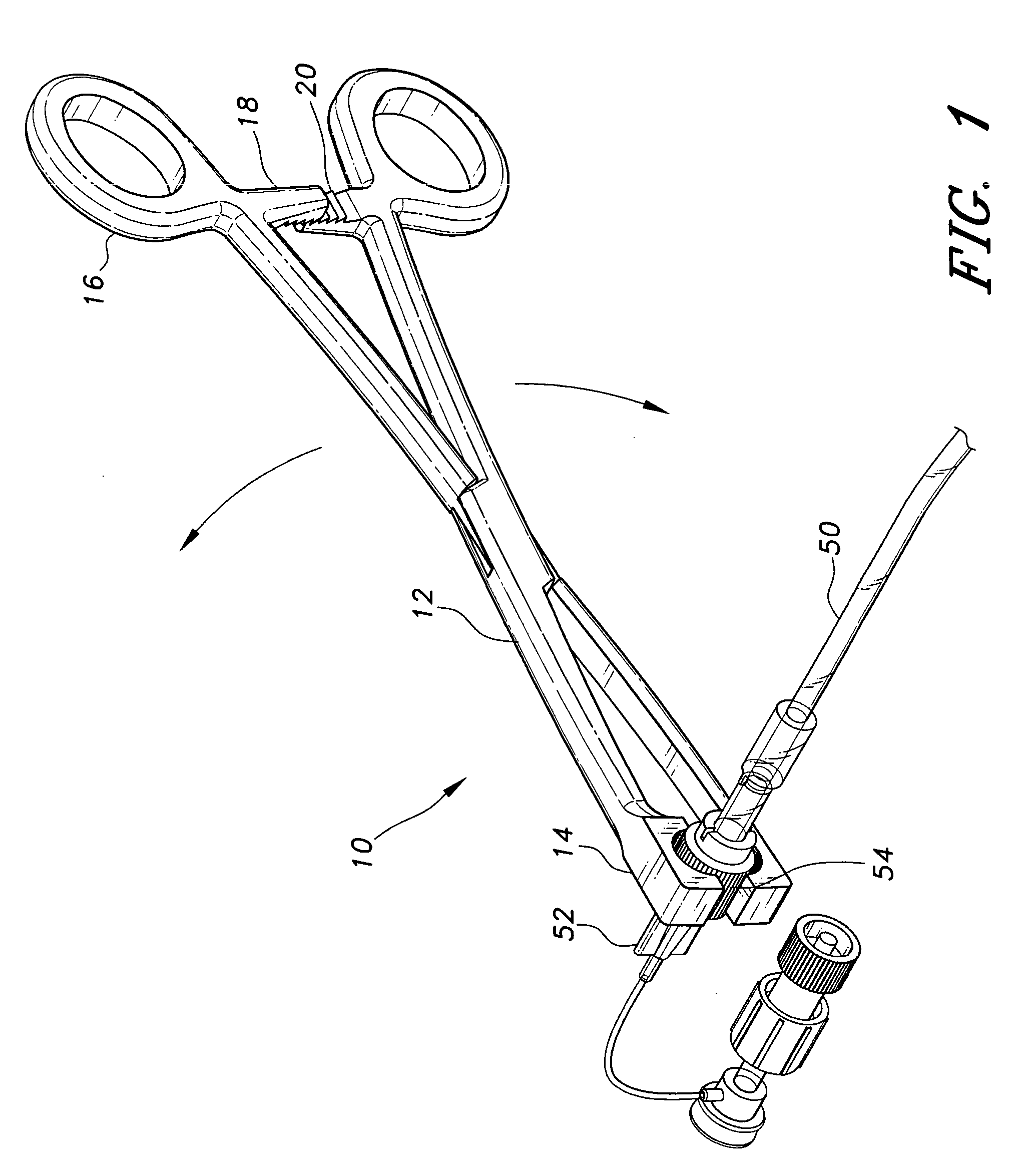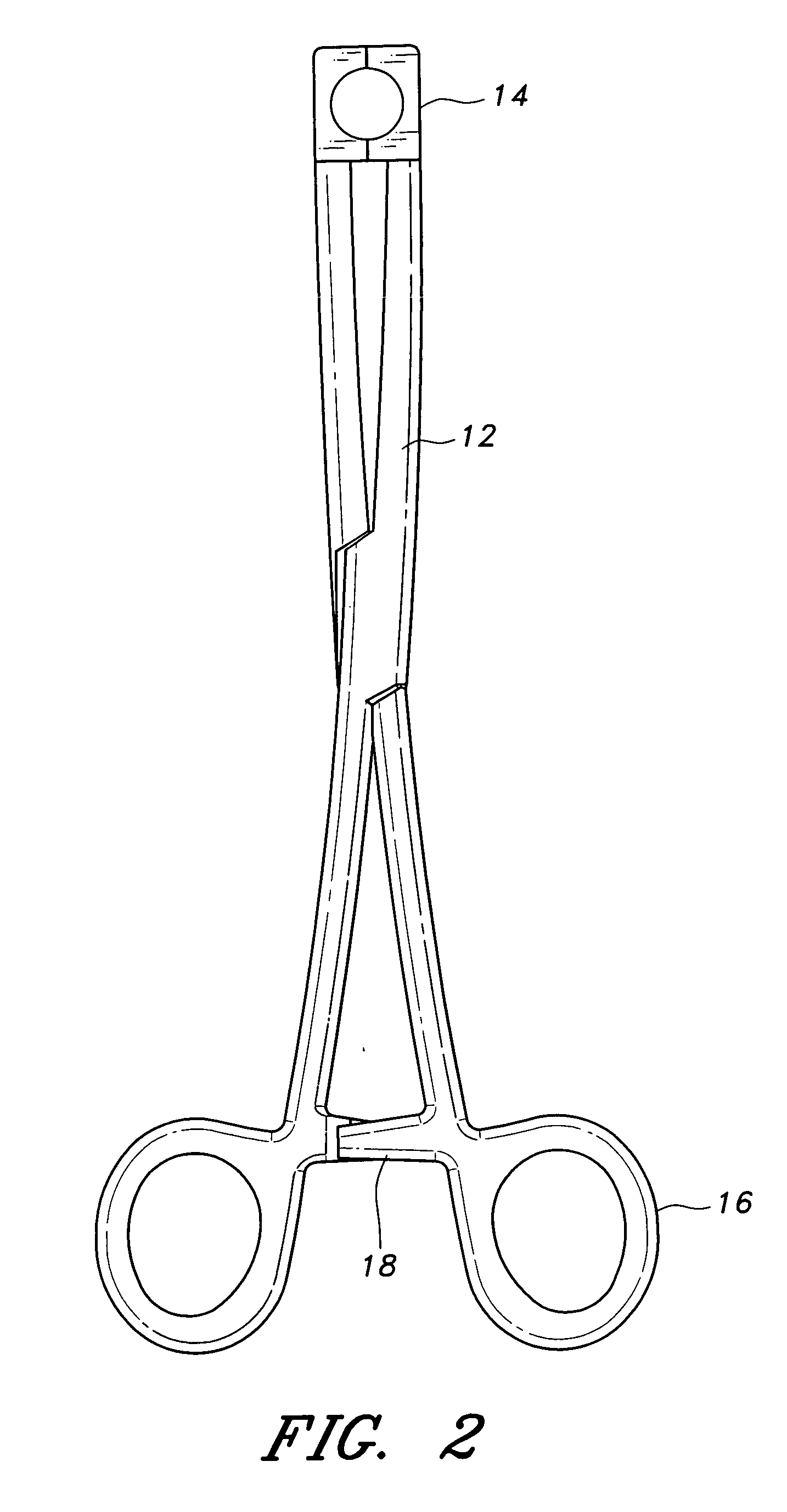Medical device to remove hubs/ends of intravenous tubing
a technology of hubs/ends and medical devices, which is applied in the field of medical devices for removing and tightening hubs/ends of intravenous tubing, can solve the problems of entire lines needing replacement, stripping and damage the outside of the hubs/ends, and breaking or cracking, so as to achieve the effect of not breaking or damaging the hubs
- Summary
- Abstract
- Description
- Claims
- Application Information
AI Technical Summary
Benefits of technology
Problems solved by technology
Method used
Image
Examples
Embodiment Construction
[0023] The present invention is a medical device to remove hubs / the ends of intravenous tubing, which essentially comprises a clamping tool, designated generally as 10 in the drawings. As shown in FIG. 1, the clamping tool 10 is designed to remove and tighten hubs 54 on intravenous lines 50 or other medical lines and tubing, such as solution sets, pressure tubing on arterial, central venous lines, Swan-Ganz catheters, extension sets, dead end (red caps), secondary tubing, etc., safely and without damage to the hub 54 or tubing 50 while being used by emergency technicians, paramedics, nurses and other medical staff.
[0024] As illustrated in FIGS. 1-4, the clamping tool 10 has a pivotally connected pair of arms 12 having opposing gripping jaws 14 at one end and ring handles 16 at the opposite end. A pair of ratchets 18 having clamping surfaces with ratchet teeth 20 defined thereon extend towards each other adjacent the ring handles 16. The pivotally connected arms 12, ring handles 16,...
PUM
 Login to View More
Login to View More Abstract
Description
Claims
Application Information
 Login to View More
Login to View More - R&D
- Intellectual Property
- Life Sciences
- Materials
- Tech Scout
- Unparalleled Data Quality
- Higher Quality Content
- 60% Fewer Hallucinations
Browse by: Latest US Patents, China's latest patents, Technical Efficacy Thesaurus, Application Domain, Technology Topic, Popular Technical Reports.
© 2025 PatSnap. All rights reserved.Legal|Privacy policy|Modern Slavery Act Transparency Statement|Sitemap|About US| Contact US: help@patsnap.com



